Bolognese is a thick meat sauce that is indigenous to the northern region of Italy, known as Bologna. Ragù all Bolognese traditionally has beef, onions, celery, carrots, wine, and milk for the sauce. While not all ragus have it, it can also commonly have pork or pancetta in addition to the beef. When the word ragù is coupled with “alla bolognese,” it is about pasta or another sauced dish. Ragù comes from the French word ragoûter, which means to stimulate the appetite.
There are some variations of this sauce, including herbs and spices, that can be added to enhance the flavors or to tailor it to one’s liking. This sauce requires some time to prep and time to cook before it’s finished. Do not expect to finish this bolognese in a few hours, and remember it will get better with time, so don’t be surprised if it is better the next day.
Put on your chefs hat and break out the Italian cooking music.
Ingredients and Substitutions
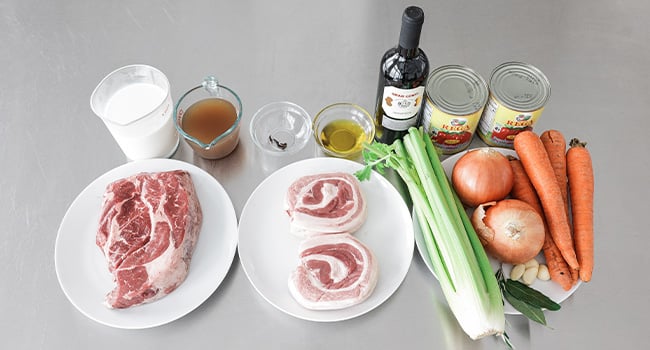
- Beef – I used beef chuck that I finely minced by hand. Other options are short rib or brisket. In addition, you can purchase pre-ground chuck or make your own Homemade Ground Beef. The classic meat to use would be veal, although it is expensive and hard to find.
- Pork – It is best to use pork belly for this. You can substitute with fresh ground pork as well.
- Onions – You can use red, white, yellow, or sweet onions.
- Celery – This is used as the vegetable base in the sauce.
- Carrots – You will need some fresh carrots for the sauce.
- Garlic – This is optional and not necessarily classic, but I like a few cloves.
- Wine – You can use any good dry red or white wine. I like to use Sangiovese for red or Pinot Grigio for white.
- Tomatoes – I prefer to hand-crush whole-peeled San Marzano tomatoes. However, you can crush regular whole peeled tomatoes, use pre-crushed tomatoes, or use home-canned tomatoes. You will also need the sauce that is in cans.
- Stock – Beef stock will add great flavors to the Bolognese sauce. You can also use water.
- Milk – This sauce is finished with whole milk. You can substitute with half and half. I would not use a low-fat milk for this.
- Bay Leaves – This is optional, but the flavors and aromatics they add are fantastic.
- Rosemary – Another optional ingredient to add for flavor. You can use 6-8 leaves of fresh basil instead.
- Cloves – Some whole cloves make this sauce delicious.
- Oil – Use olive oil in this recipe. You can also use a neutral-flavored oil.
How to Make a Bolognese Sauce
Mince the beef and pork belly.
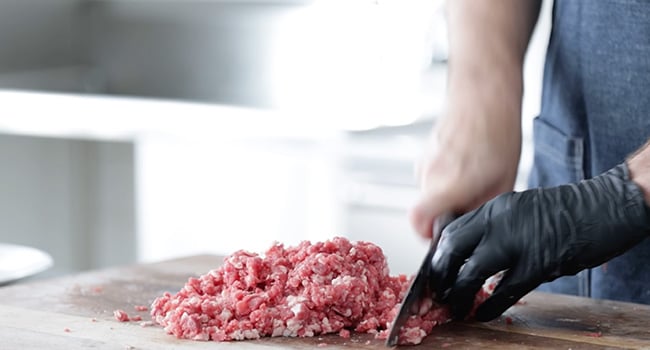
Mince the onions, celery, carrots, and garlic.
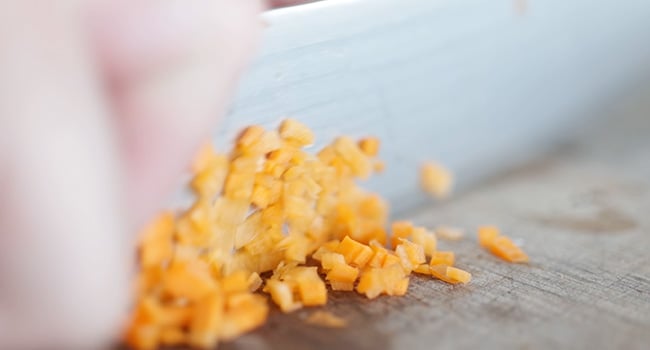
Add the olive oil to a large pot or rondeau over high heat and heat it until it begins to smoke lightly.
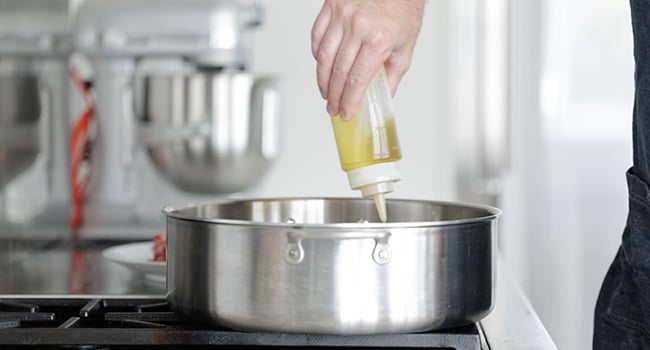
Add in the beef spread it out around the pan, and sear for 2 minutes.
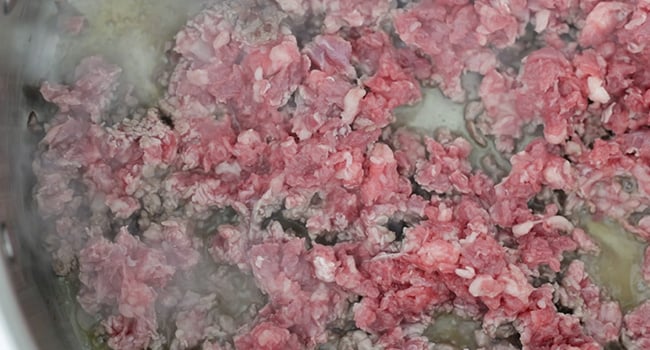
Stir the beef and cook for 3 to 4 minutes or until it is finished cooking. Transfer it to a large bowl.
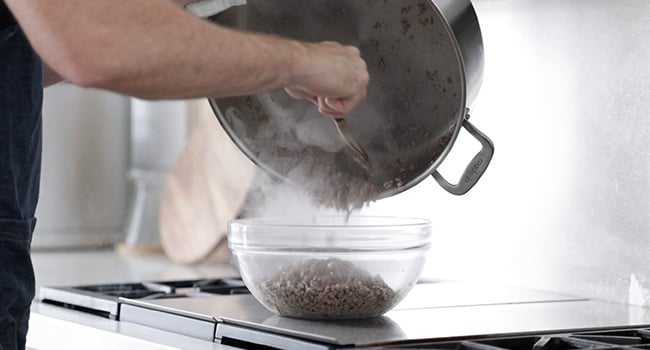
Place the pork into the pan over high heat, spread it out, and sear for 2 minutes.
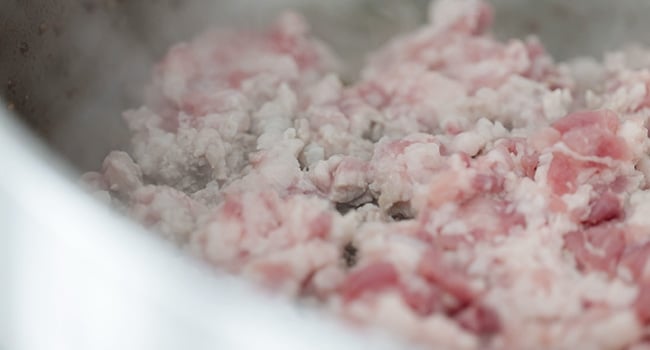
Stir the pork, turn the heat down to medium-low, and render the fat while occasionally stirring. This usually takes about 10 to 12 minutes.
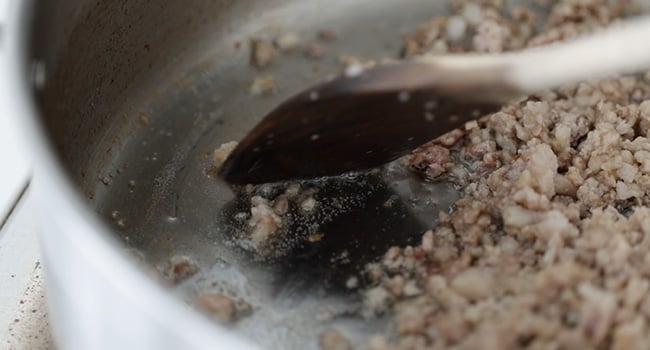
Remove the pork leaving the rendered fat in the pot, and set it in the bowl with the cooked minced beef.
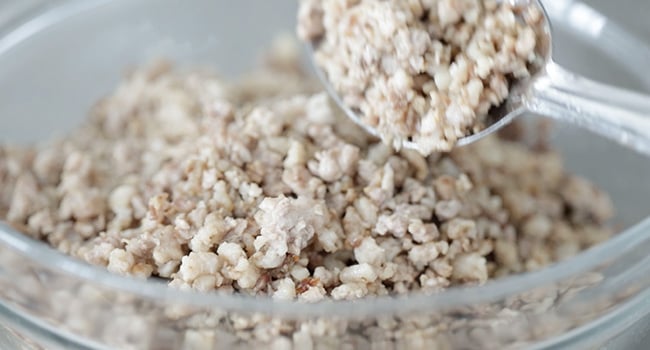
Add in the onions and caramelize on low heat for 45 to 60 minutes while occasionally stirring.
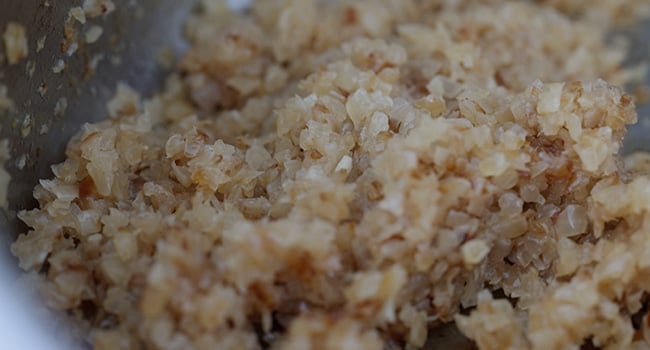
Pour in the carrots and celery, season with salt and pepper, and sauté over medium heat for 10 to 12 minutes or until tender but still slightly firm on the outside.
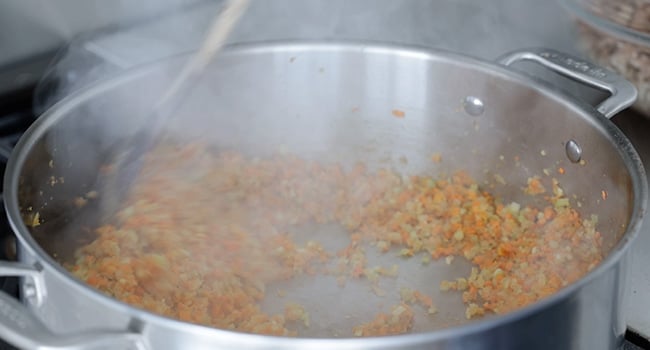
Stir in the garlic and cook for 30 to 45 seconds or until fragrant.
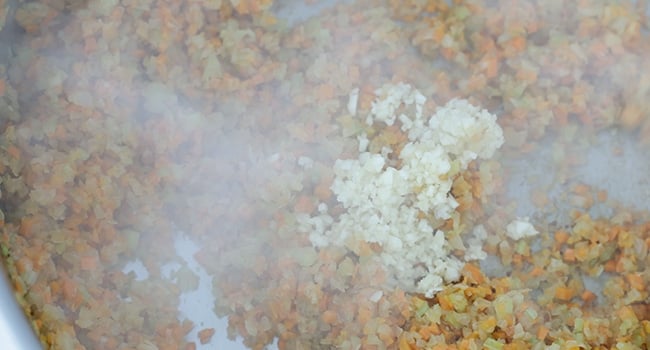
Mix back in the cooked beef and pork, along with the bay leaves and cloves.
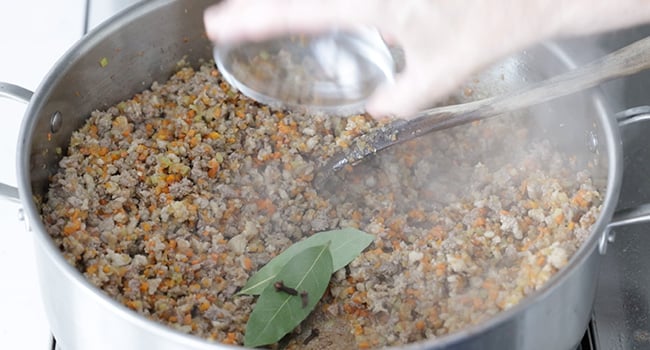
Deglaze with red wine, turn the heat to high and frequently stir until the wine is almost gone and absorbed, or au sec.
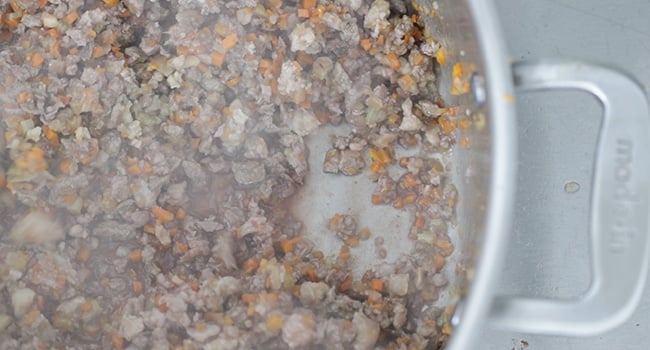
Add in the tomatoes and beef stock and stir to combine. Place on a lid and simmer over low heat for 3 hours. Stir every 45 to 60 minutes. It should be a thick, rich sauce at this point.
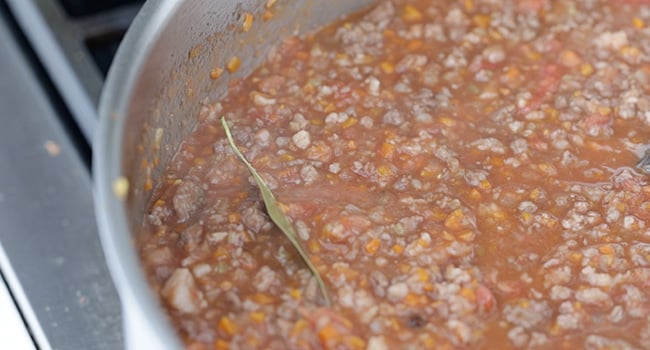
Pour in the milk and mix to combine.
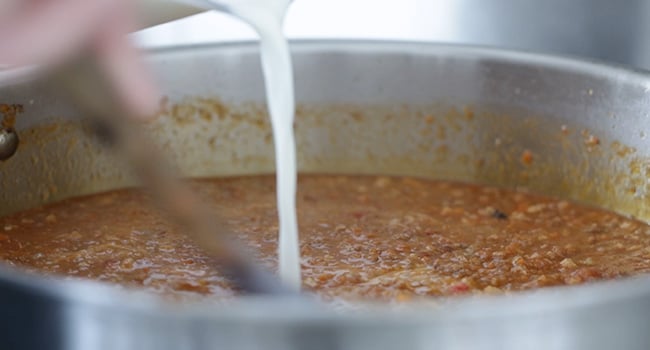
Add in optional rosemary sprig, and lightly season with salt and pepper. Cook uncovered over low heat for 60-90 minutes. It will have a rich creaminess to it when it’s finished.
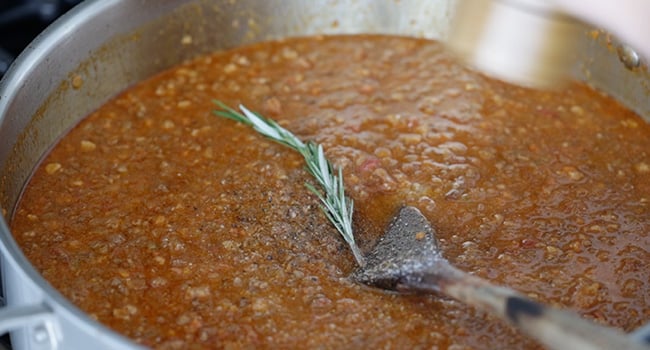
Cook the pasta according to its instructions and gently mix in a pan or bowl with some of the bolognese sauce using a rubber spatula.
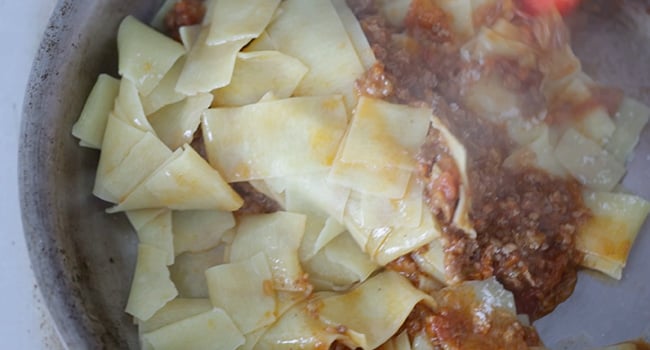
Serve with a generous garnish of freshly grated parmigiano Reggiano.
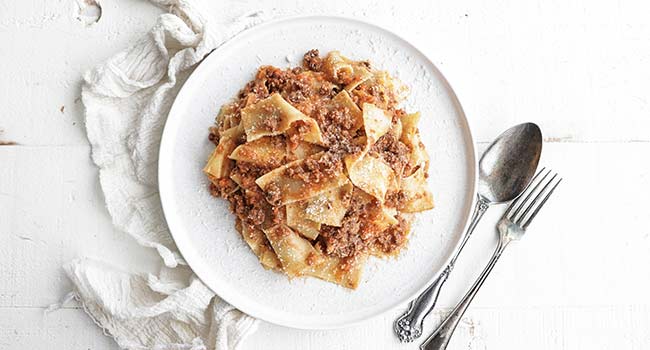
PRO TIPS

No comments:
Post a Comment